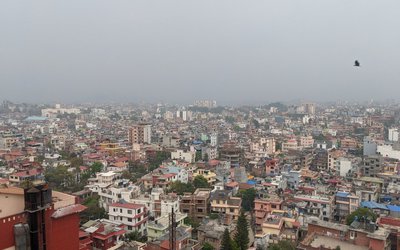All disasters, be they natural or manmade, disrupt economic activities. Most importantly they affect the finances of government, financial and non-financial institutions and individuals. The loss of capital in the form of infrastructure is the most likely scenario after a big earthquake. Homes are destroyed, factories are damaged and infrastructure is weakened. Those who know Economics 101 can tell us production will be zero without the capital.
Private homes
According to the recent figures, three hundred thousand private homes havebeen completely destroyed and the same number of private homes is partially damaged. Nepal Rastra Bank (NRB) has directed the financial institutions to make cheap loan worth of 2.5 million rupees availablein Kathmandu valley and 1.5 million rupees outside the valley. Let us suppose that individual home owners, on an average, willhave access to half that amount. Even with this conservative assumption, the Kathmandu valley alone needs around 64 billion rupees for reconstructing the private homes. Outside the valley, the cost of reconstructing private homes would hover above 356 billion rupees. If we assume that partially destroyed private home is going to cost one hundred thousand rupees on average, the total cost of repairing would be 25 billion rupees. In total, the immediate need is of 445 billion rupees.
Government offices
More than ten thousand government buildings have been totally destroyed. If we take 2.5 million rupees as the cost of rebuilding a government building, the total cost would amount to 25 billion rupees. Assuming one hundred thousand rupees of repair cost per building, the total burden on the government budget will be of worth of 1.5 billion rupees.
Banking and insurance
As most of the destroyed homes are uninsured in Nepal only a tiny fraction of the cost will be incurred by insurers. According to the world's oldest and most authoritative insurance rating company A.M. Best’sbriefing, the 7.8 magnitude earthquake is expected to have anegative impact on some local insurance companies because of the significant cost from property and motor losses. The most affected companies are going to be those thatrely on premiums from Kathmandu valley for business. On the positive side, the insurance sector can expect a rapid explosion of demand for home insurance in the future.
The banking sector is facing two-fold problems. Their loan has come under threat after the destruction and is likely to face sizable number of defaults. And they have been directed by NRB to supply home loans at maximum of 2% interest. This will severely cut down their profit margin.
The financial system has to be ready for providing almost all the finance for reconstructing the private homes, which is estimated to be around 445 million rupees at very low interest rate. Whether the system will be able to accomplish this remains an open question.
Infrastructure
According to The China Three Gorges Company,the earthquake has caused a serious damage to the 111-megawatt Rasuwagadhi hydropower station. Hydroworld, an industry trade magazine, said that the 144-megawatt Kaligandaki hydroelectric power station and the 22.1-megawatt Chilime hydropower plant may have been affected. This will put a severe constraint on an already overwhelmed power supply of the country.Although already open, Araniko highway has been severely damaged. Many rural roads are expected to have suffered a serious damage.
According to UNESCO’s preliminary assessment, the monuments and sites within the Kathmandu Valley World Heritage property, as well as several other cultural and natural heritage sites located in the area, have been heavily affected.
The repair cost ofthese infrastructure is going be in billions if not in millions.
Financing the destruction
The country immediately needs at least 500 billion rupees worth of financial injection. As there is little support from insurance, there are only two sources of financing the rebuilding: government and donors (national and international).
Let us evaluate the capacity of the government before we form expectations. During the first eight months of the fiscal year 2014/2015, the government’s capital expenditure was merely 23 billion rupees and the budget surplus was 50 billion rupees. The recurrent expenditure for the same period was 167 billion rupees.
Following the destruction,foreign exchange and revenue generated from tourism sector is going to dwindle significantly. This will tighten the government budget further.
This shows the grim picture of what the government will be able to contribute in the recovery process.
If history is supposed to be learned, corruption scandals are likely to hamper the reconstruction effort much more severely.
International aidalready constitutes almost one-fourth of the country’s national budget, according to 2013 figures.Donors have been reported as losing confidence in Nepal as a result of political interference and corruption in relief efforts as well the poor capacity to utilize the aid. So gathering international finance will not be a minor challenge to overcome.
Hence four options are available for the government at the moment. First, restrict the recurrent expenditure this year and slowly shrink it to a minimum level in the next five years. Second, find cheaper ways to build homes and public infrastructure. Development and import of new technology should be encouraged through fiscal tools for this purpose. Third, the government should encourage investment from non-resident Nepalese. Serious efforts have to be made to ensure this financing is cheaper and effective. Last but not the least, encourage return of Nepalese workers from abroad so that there is enough supply of labor and wages do not face upward pressure thereby increasing the cost of reconstruction.

Niraj Poudyal
Niraj Poudyal (Dr.)Senior Data Base Expert & Faculty of Economics Kathmandu University School of Arts (KUSOA)
- Earthquake: Great Loss Of Labor Supply
- May 08, 2015














